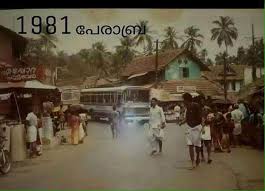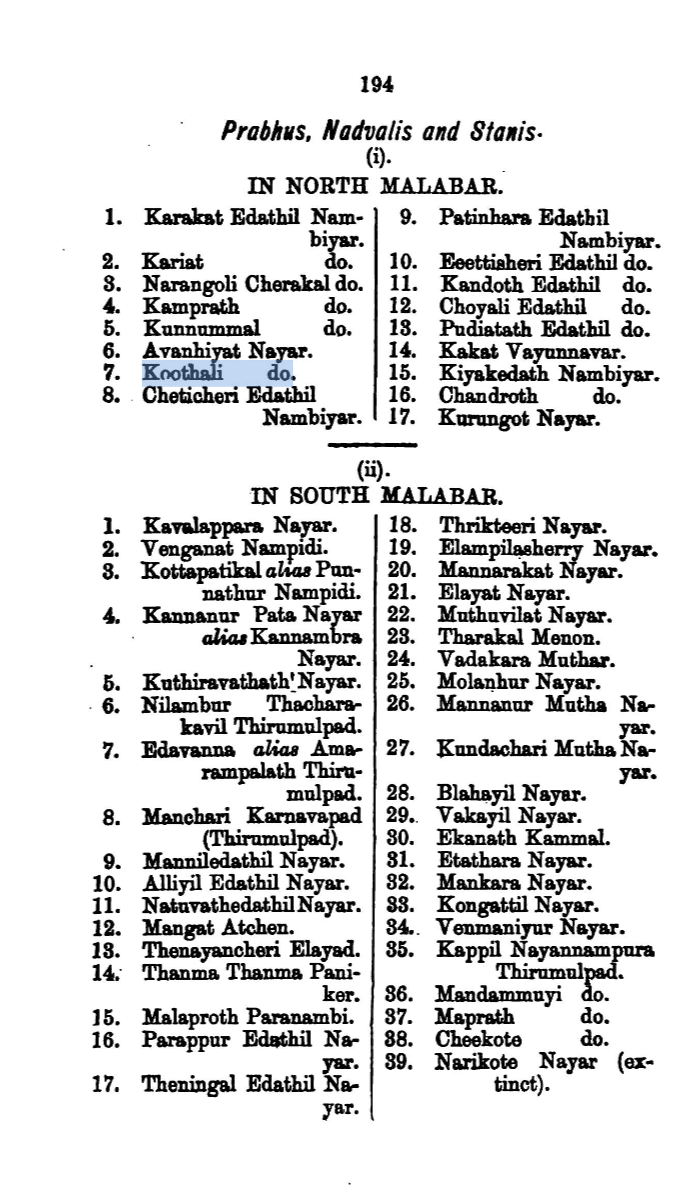Koothali Nair on:
[Wikipedia]
[Google]
[Amazon]

 The Koothali (also spelt Kuttali, Kûtali, and Koodali)
The Koothali (also spelt Kuttali, Kûtali, and Koodali)
 By 1859, with the Paleri Nairs having gone extinct, the Koothali Nair, along with his Ayinhat cousin, were regionally second only in rank to the Porlathiri Raja of
By 1859, with the Paleri Nairs having gone extinct, the Koothali Nair, along with his Ayinhat cousin, were regionally second only in rank to the Porlathiri Raja of

 The Koothali (also spelt Kuttali, Kûtali, and Koodali)
The Koothali (also spelt Kuttali, Kûtali, and Koodali) Moopil Nair
Moopil Nair, also transliterated Mooppil and Muppil is an elite subgroup of the Nair Caste system in India, caste. They were Desavazhi, desavazhis of small feudal polities, also known as vazhunnors in the South Malabar, present-day Kerala state, ...
or Moothavar, most commonly known as the Koothali Nair and styled Vallabhan Chathan, additionally known as the Koothali Payyormala Nayar and as Vazhunnavar, historically held and controlled an eponymous principality and sthanam of North Malabar, with his hereditary seat in Koothali
Koothali is a village near Perambra in Kozhikode district in the state of Kerala, India, and the traditional seat of the Koothali Nair.
The name Koothali has evolved from two terms: Kooth + Ali, in which "Kooth" means performing arts like "K ...
. Towns and lands subject to the Koothali Moothavar's rule traditionally included Perambra
Perambra is a major town in Koyilandy taluk of Kozhikode district in North Malabar region of Kerala state, India. Perambra is the anglicized form of the original name 'Payyormala' from the British rule. It is one of the 140 assembly constituen ...
, Changaroth
Changaroth is a village in Kozhikode district in the state of Kerala, India.
Demographics
India census, Changaroth had a population of 15,760, with 7,805 males and 7,955 females.
Transportation
Changaroth connects to other parts of India th ...
, Cheruvannur
Cheruvannur is a census town and Cheruvannur-Nallalam Part of Kozhikode Corporation.
Geography
Cheruvannur Nallalam municipality has a total area of 10.31 square kilometers. The adjoining local self-governing bodies are Olavanna, beypore, ...
, Kuttiady
Kuttiady is a Major town situated in Kozhikode district of Kerala, India. It is located from Vadakara, from Kozhikode. Kuttiady is situated in the slopes of the Western Ghats.
The four-sided junction of Kuttiady helps travelers to reach dif ...
, and adjacent regions, including Kottathara. The Koothali Nair was traditionally one of Malabar's most prominent Naduvazhi
Naduvazhi ( IAST:''nātuvāḻi''; ) were feudatory Nair or Samantan princes who ruled over microstates that are now administrative parts of Kerala, India. They constituted the aristocratic class of Nairs within the Hindu caste system and were ei ...
s, a Moopil Nair
Moopil Nair, also transliterated Mooppil and Muppil is an elite subgroup of the Nair Caste system in India, caste. They were Desavazhi, desavazhis of small feudal polities, also known as vazhunnors in the South Malabar, present-day Kerala state, ...
and Vazhunnavar
The Mannanar dynasty () was a Thiyya dynasty in Malabar, near present-day Kannur and Kasaragod districts of Kerala. The ruins of Mannanar palace can still be seen at the foothills of the Ghats borders of Coorg. The ancient palace in Eruvesi to ...
, as well as a major Jenmimar, and held the Nair
The Nair (, ) also known as Nayar, are a group of Indian Hindu castes, described by anthropologist Kathleen Gough as "not a unitary group but a named category of castes". The Nair include several castes and many subdivisions, not all of whom hi ...
caste rank of Nambiar
Nambiar may refer to:
*Nambiar (caste surname), a surname used by multiple caste groups
*Nambiar (Ambalavasi caste), a surname of Pushpaka Brahmin from Kerala, India
*Nambiar (Nair subcaste), a surname of Nair from North Malabar, India
People
* ...
or Samanta
Samanta was a title and position used in the history of the Indian subcontinent between 4th and 12th centuryThe Journal of the Bihar Research Society, Volumes 69–70, p.77 to denote a vassal, feudal lord or tributary chief. The leader of 100 vil ...
, and the family style of swaroopam
''Swaroopam'' is a 1992 Malayalam film
Malayalam cinema, also referred to as Mollywood, is a segment of Indian cinema dedicated to producing films in the Malayalam language, primarily spoken in Kerala and the Lakshadweep islands. It e ...
.
Origins
The Koothali succession descended matrilineally perMarumakkathayam
Marumakkathayam was a system of matrilineal inheritance prevalent in regions of the Indian state of Kerala. It is similar to the Aliyasanthana system followed by the Bunt community in Karnataka.
The word "Marumakkathayam" originated from the ...
through the aggregated family, known corporately as the ''Koothali Swaroopam'', which formed originally as a ''thavazhi'' or ''kovilakom'' of the Ayinhat swaroopam, after an Ayinhat princess married the Raja
Raja (; from , IAST ') is a noble or royal Sanskrit title historically used by some Indian subcontinent, Indian rulers and monarchs and highest-ranking nobles. The title was historically used in the Indian subcontinent and Southeast Asia.
T ...
of Kottayam
Kottayam () is a city in the Kottayam district of Kerala, India. It is the district headquarters of the district and is located about north of the state capital Thiruvananthapuram. As per the 2011 Indian census, Kottayam has a population of ...
, perhaps Pazhassi Raja
Kerala Varma Pazhassi Raja () (3 January 1753 – 30 November 1805), also known as Cotiote Rajah and Pychy Rajah, was the '' de facto'' head of the Kottayam Kingdom in the Malabar region of Kerala between 1774 and 1805. His struggles with the ...
.
Per the account, Lakshmi Kettillamma, the newlywed princess, passing through Kurumbala en route to the Ayinhat seat, observed along with her husband a series of strange omens featuring dogs and jackals. After reaching the Ayinhat palace, dreaming of the kuladevi, and consulting with priests, the Raja decided to give over to his wife and his future issue the tainted territories. His own family objects, but is outsmarted by the Ayinhat princess, who secures for her son, Ayinhat Nayar, vast demesnes of his own. The Kottayam Raja raised his son to the rank of Vazhunnavar
The Mannanar dynasty () was a Thiyya dynasty in Malabar, near present-day Kannur and Kasaragod districts of Kerala. The ruins of Mannanar palace can still be seen at the foothills of the Ghats borders of Coorg. The ancient palace in Eruvesi to ...
and ceded to him from Kottayam's holdings the Kottathara and Kurumbala amsams, to be adjoined to Payyormala. Two Nayars - the Thenamangalath Nayar and the Poyil Nayar were appointed as lower nobility in service.
Details
 By 1859, with the Paleri Nairs having gone extinct, the Koothali Nair, along with his Ayinhat cousin, were regionally second only in rank to the Porlathiri Raja of
By 1859, with the Paleri Nairs having gone extinct, the Koothali Nair, along with his Ayinhat cousin, were regionally second only in rank to the Porlathiri Raja of Kadathanadu
Kadathanadu, also rendered Kadathanad, Katattanad, and, academically, Kaṭattanāṭǔ; alternately known as Vatakara or Badagara, was a kingdom in North Malabar just north of the Korappuzha River, ruled by the Porlathiri dynasty after their d ...
, to which region Payyormala now belonged. Immediately beneath them in regional rank were Kadathanad nobles of the highest class: the Kurukkat Kurup, Pookote Nambiar, and Murchilotte Moopil Sthani (whence the Komath) ordered as the first three by precedence.
Under the British Raj
The British Raj ( ; from Hindustani language, Hindustani , 'reign', 'rule' or 'government') was the colonial rule of the British The Crown, Crown on the Indian subcontinent,
*
* lasting from 1858 to 1947.
*
* It is also called Crown rule ...
the Koothali Nair, as ruler of a ''zamindari-type'' princely state was entitled to a malikhana, or Privy Purse, corresponding to one-fifth of the revenues from territories over which he had been mediatized from sovereignty, and paid land revenues of approximately 12,000 rupees.
Following the death of Kunhiraman, the last Koothali Moothavar, in 1936, the voluminous jenmi
Jenmi or Janmi (), plural Jenmimar, is the Malayalam term used to refer to the landed aristocracy of Kerala who traditionally held their lands as absolute and allodial owners, with such lands known as Jenmom or Janmam. They formed the landownin ...
landholdings of the sthanam were extensively litigated and ultimately escheat
Escheat () is a common law doctrine that transfers the real property of a person who has died without heirs to the crown or state. It serves to ensure that property is not left in "limbo" without recognized ownership. It originally applied t ...
ed to the state, beginning in 1939, and accounting for some 47,000 acres of diversely forested and agrarian lands, which were supervised by an appointed special tehsildar
In Bangladesh, India, and Pakistan, a tehsildar, talukdar, or mamlatdar is a land revenue officer accompanied by revenue inspectors. They are in charge of obtaining taxes from a tehsil with regard to land revenue. A tehsildar is also known as a ...
. During 1940s-era agitation echoing the Mappila Rebellion
The Malabar rebellion of 1921 (also called Moplah rebellion, and Mappila rebellion, Malayalam: ''malabār kalāpam'') started as a resistance against the British colonial rule in certain places in the southern part of old Malabar district of pr ...
of 1921, peasant demands of the Karshaka Thozhilali Party
Karshaka Thozhilali Party (KTP) was a political party in Kerala formed by Fr. Joseph Vadakkan and B. Wellington. KTP was part of the government in Kerala from 1967 to 1969 in which E. M. S. Namboodiripad was the chief minister and B. Wellington ...
included the expropriation of at least 16,000 acres or 20,000 acres of cultivable land from the estate to be repurposed for their use.
The final Koothali Nair Kunhiraman married married the eldest daughter of Dewan Bahadur Dalawa Palakkal Ankarath Raman Menon, foundress of the Vengalil tharavadu. Their only child, a daughter, married the only son of the Porlathiri Raja of Kadathanadu
Kadathanadu, also rendered Kadathanad, Katattanad, and, academically, Kaṭattanāṭǔ; alternately known as Vatakara or Badagara, was a kingdom in North Malabar just north of the Korappuzha River, ruled by the Porlathiri dynasty after their d ...
, and his consort, the heiress of the Komath tharavad. V.K. Krishna Menon was the foremost of the children of the next generation.
References
{{reflist Indian royalty Zamindari estates Feudal states of Kerala History of the Nair Nair Indian landowners Indian landlords Indian princes